-
Posts
66 -
Joined
-
Last visited
Content Type
Profiles
News and Information
Tutorials
Product Reviews
Supplier Listings
Articles
Guitar Of The Month
Links and Resources
Forums
Gallery
Downloads
Posts posted by FlashBandit
-
-
I'm not as versed in this as I'm sure most people here are, so I appreciate feedback. Mender, I'm thinking about building something like the Beavis board, but without the voltage sag and instead to have some pre-wired pots and a rotary switch in there. The idea would then be that the pots my have slightly higher values than I commonly need, and so I can effectively lower the R of the pots by adding a couple resistors on the breadboard, so I'm not always soldering up new pots, or having to move hardware around. This would then be applicable to 90% of the possible pedals I might want to make, and then I could make up the difference by using trims/other switches where needed.
Does this seem like it'd work ok for some of you seasoned pros?
-
Ya, I'm kind of thinking about making a pedal with a breadboard, and all the pots and stompswitch etc. are built in for an easy-to-wire-up solution to my long pedal building processes. Kind of like the Beavis board but I'm not a huge fan of those.
So for something like this, would you prefer ease of use, and simple options? or would you prefer it to be way customizeable, and tons of options?
-
I'm trying to figure out if these things are worth building, Occasionally you see prototyping pedals where all the dials and switches are built into a pedal, and you get to arrange all the electronic guts (ICs, resistors, caps etc.) to make any pedal you want, and fully customizable. So basically it's a shell of a pedal, where without soldering you get to make/modify any pedal you want, and you can even build/tweak exact replicas of almost any pedal. If it was easy and cheap enough to do:
Would you ever use one to sculpt your unique tone?
To learn electronics for fun?
Or if you're electronics savvy already, would they seem useful to streamline pedal projects?
-
Does anyone know any good resources for constructing your own MIDI pickup?
I'm thinking a hex driver would be best so you get all 6 notes separate.
Any thoughts or success stories?
-
Yeah, do bookmatched flamed maple on the L and R, but do a huge stripe down the middle.
-
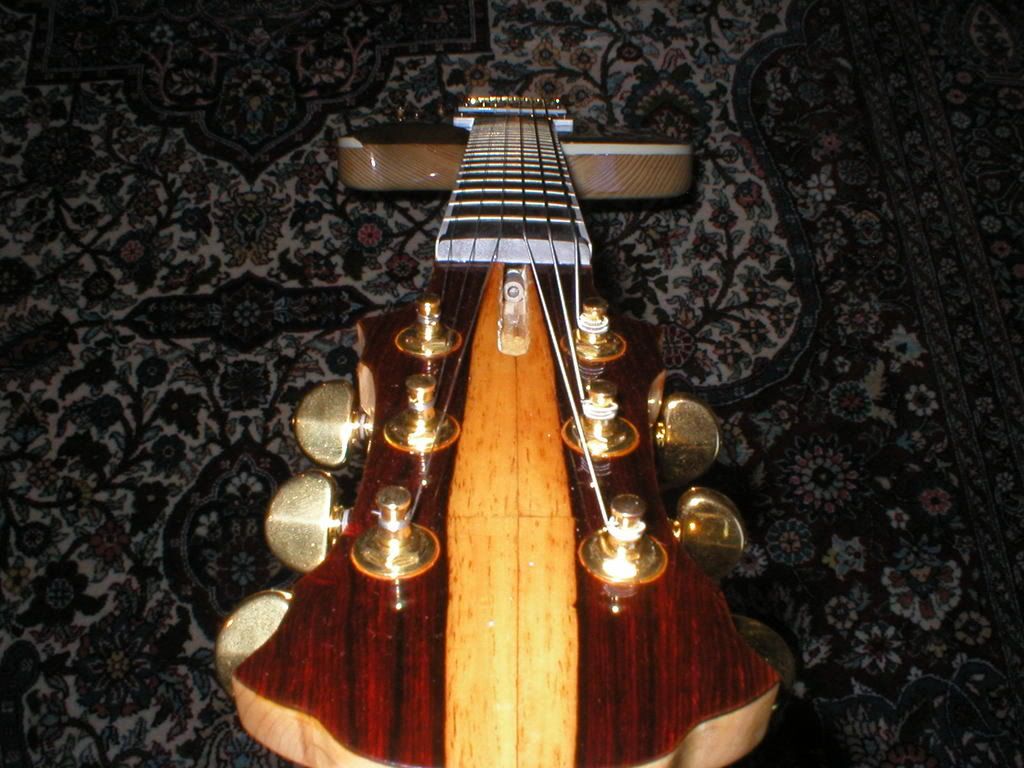
Here's a quadruple bookmatch I did for my headstock, just another idea to play around with.
-
-
so do you taper the fretboard thinner than you want so that the binding brings it to the right thickness?
And is it easier to have the frets poke out through slots in the binding or to be covered by the binding?
-
It's already carved/rounded. Are you suggesting I just glue a long "splinter" in there? Should I do that before or after I attach the fretboard?
Also, should I put the binding on the fretboard before or after attaching the fretboard to the neck?
-
width parallel to frets. I'm worried the strings won't have enough room. I can cut the fretboard to the right size, but then it might not (would not) match up with the neck 100% unless I did something about it. Any ideas?
-
Um, Is this thread dead? I know there are some gurus out there somewhere! Please help me!
-
I have what may be a dumb question, but if it is a semi-hollow why isn't the ash portion of the body chambered? You can see the f-hole goes straight down the the ash, but the ash is still in one piece, there is no cavity there.
maybe it's not clear in the photo, but the entire left side of the guitar is an open chamber, and then I also put a chamber in the horn, but it's airtight, and more for lessening the weight. When the top is carved, it should be a little more obvious, but it's just so thick right now.
Also, please look at my question before if you can help, but I have another question too. Sorry, I'm full of em. My neck is 1/16" too thin around the 10th fret on, and it gets a little worse as you go further. What do I do? It'll be bound, will that help? Or is 1/16 not enough to worry about? That is 1/32" off either side, or 1/16" from what it should be. Thanks!
-
Avoid the titebond III, stick with original. You don't need waterproof glue for guitars, and the additives which aid it's water resistance also prevent it from setting hard and resisting creep. Same is true of II.
How much of a problem is it that I already used it on the body? And is creep just when the two pieces move in relation to eachother?
-
It's titebond III, the water proof stuff. Will acetone still work? If so, you saved me alot of grief!
-
That ebony FB sure looks strangely like cocobolo..
Interesting project though.
oh right, good call. In some of the pictures I show a mock up with a piece of cocobolo I was going to use, but then I decided to get an ebony one from stew mac.
And yeah, I think the 3 rotaries will be cool! They'll give me 84 different pickup combos, and if you've ever played with series or out of phase sounds (or mixes) you'd know it was worth it

Sweet looking violin guitar! Looks alot like mine, but the horn's a little too extreme. The key element I'm going for is elegance, the old school body brings up ideas from the past, while a carved body with gold hardware just says class (at least in my mind)
And thanks for the feedback! About the glue, I was considering using a chisel, but that may be too hard. And I actually didn't use a template for the f hole, I drew it on by hand and cut it out with a scroll saw, rasps and files.
-
Here's my unnamed project! It's a violin-looking-semi-hollow-hard tail-HH solid body electric.
Specs:
-Walnut carved top
-Hard Ash Body
-Maple Neck
-Ebony fretboard
-book matched (4 times) cocobolo veneer for headstock that has some sexy white sapling to contrast with the very dark old wood.
-Two Humbuckers (thinking about duncans)
-3 rotary switches that allow me 84 different pickup combinations (including phasing, parallel, series, coil splits etc!
-volumes and tones for both pickups
-24 3/4" scale length
-Gold TOM bridge
-Gold stop piece
-Gold Rotomatic tuners
-white plastic pu rings
-white binding over top, fretboard and headstock
Heres what I have so far, I'm getting there slowly. I swear, I'm spending 10x more time researching and studying than building!
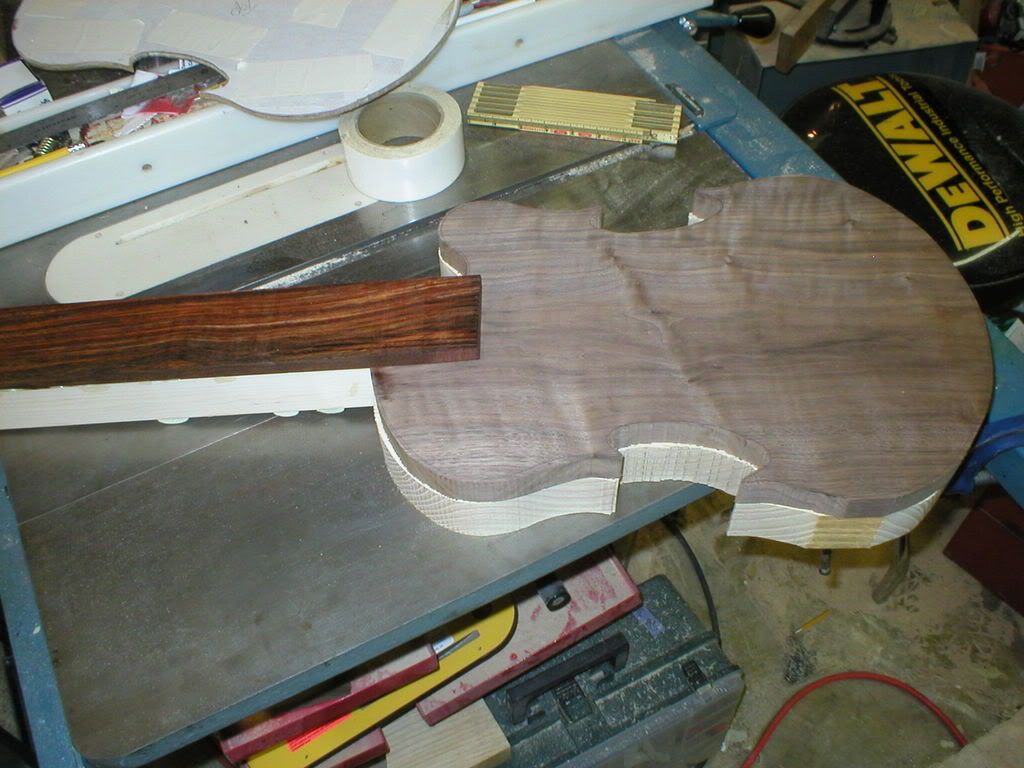
http://i151.photobucket.com/albums/s142/fl...tx/P1010029.jpg
http://i151.photobucket.com/albums/s142/fl...tx/P1010046.jpg
http://i151.photobucket.com/albums/s142/fl...tx/100_0369.jpg
I'm gonna bookmatch that cocobolo (with sapling) to make a headstock veneer!
http://i151.photobucket.com/albums/s142/fl...tx/P1010055.jpg
http://i151.photobucket.com/albums/s142/fl...tx/P1010054.jpg
http://i151.photobucket.com/albums/s142/fl...tx/P1010060.jpg
http://i151.photobucket.com/albums/s142/fl...tx/P1010052.jpg
http://i151.photobucket.com/albums/s142/fl...tx/P1010053.jpg
I'm so pleased with the neck, not to brag but I didn't know rasps and sand paper could get something that smooth. And it was alot easier to round the neck than I thought it would be.
http://i151.photobucket.com/albums/s142/fl...tx/P1010067.jpg
Starting the neck pocket with a forstner. Any tips on how to get glue squeeze out out of the f-hole? Or the electronics cavity for that matter?
-
I found this online neck angle calculator that told me I need an 8 degree anlge on my neck, which I seriously doubt. It's not a prank, and math can't be wrong so I'm assuming that my inputs were wrong, so I'm curious of a few measurements from other guitars.
What is the height of a carve on a normal carved guitar, like a LP? Mine is around 3/4" I think, but could that be right (too much)?
What is the distance from the top of the carve to the furthest point on the bridge for a TOM on a LP?
I seriously can't thank you enough, I'm cutting up the neck tomorrow. THANKS!
-
So if I wasn't positive on my neck angle, should I make it a degree bigger or smaller? I ask because if you go bigger, you can raise the bridge to compensate, but if you go lower, what then?
Also, how close do I need to be in my angle measurements. Because of inferior tolls and other complications, I may not be able to be exact, any tips? It's a set neck. THANKS in advance
-
oops, I meant I would band saw the neck tenon, lol. What techniques are used for both the mortise and the tenon?
-
I'm going to cut my neck angle into the neck instead of the pocket, how do you cut the pocket and the neck tenon? I've considered a router, but I don't have a template. And a band saw, but would that be exact enough? What would you do?
Secondly, what if my angle was calculated wrong? Would it kill if I was a degree off? If I wasn't sure, should I be over or under on the angle?
-
Firstly, thanks for reading! I'm building a semi-hollow and I have some carving questions. Please Please Please help, I rarely am able to use my friends shop so I need to work efficiently when I can! Thanks!
-Is there an easier method of carving than the router/wings technique (from here) or a spokeshave? Any tips?
-Do I route the neck pocket (it's a set neck) before or after carving?
-Do I route pickup cavities before or after carving? If its before, will I angle them to match the neck angle after carving?
-The TOM bridge and stop piece are going to be on an uncarved portion (right?) so it shouldn't matter if I drill those first (right?).
-Bridge and stop piece:
What are these measurements:
*Gotoh TOM - M8 x 1.25
*Gotoh Stop - M8 x 1.25 (both have bushings)
What size whole do I drill and how deep?
How do I connect a ground wire to the bushing?
How far back from the bridge should I position the stop piece?
How do I angle the bridge?
These are all questions that I've searched for the answers to, to no avail, so thanks alot for your feedback and I'll be posting pictures soon!
-
If I'm not mistaken, 500k's are fatter/warmer/mids+lows, right? That's what I want, but there's also the problem of impedance/output. I've played on HSS's and if the humbucker's on, it drowns out the single coils. I basically want each pickup to have a similar output so that one doesn't commandeer my sound! How do I match up pickups (before buying them)? If an hb output's too much (more than the sngl coil), can I add a resistor in parallel to ground, and maybe add a simple highpass cap so I don't drain the life out of my tone?
-
I'm building an HSH semi-hollow electric and I need to know how to match up the pickups with respects to impedance, tone and anything else I've overlooked. Also, each pickup will have a volume pot, should the humbuckers get 500k's and the single coil get a 250k?
-
I want to build my own pitch shifter, and the only schematic I could find was the one on general guitar gadgets. I've heard it's no good, but I want to know if that was just opinionated. Anyone built it? Can you control how much the pitch is affected? up and down? does it maintain harmonic relations between notes? do you know of any better schematics for a good pitch shifter? I'm just looking for something similar to the digitech pedal, 8ve up and down. Schematics would be awesome!




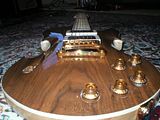
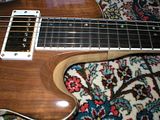
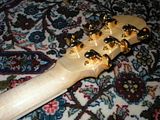
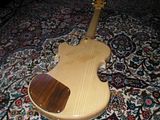
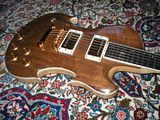
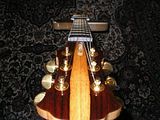
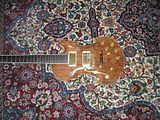
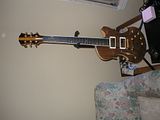
Prototyping Pedals - Would You Use Em?
in Electronics Chat
Posted
Is there any reference for what affected tapers would look like? (I can't seem to find any online)